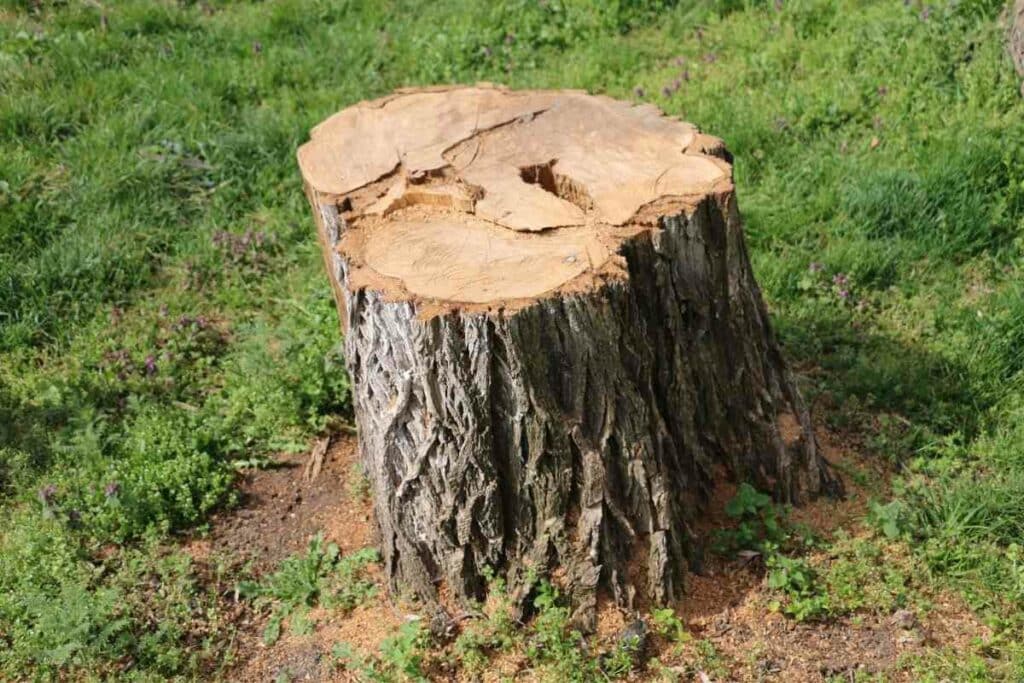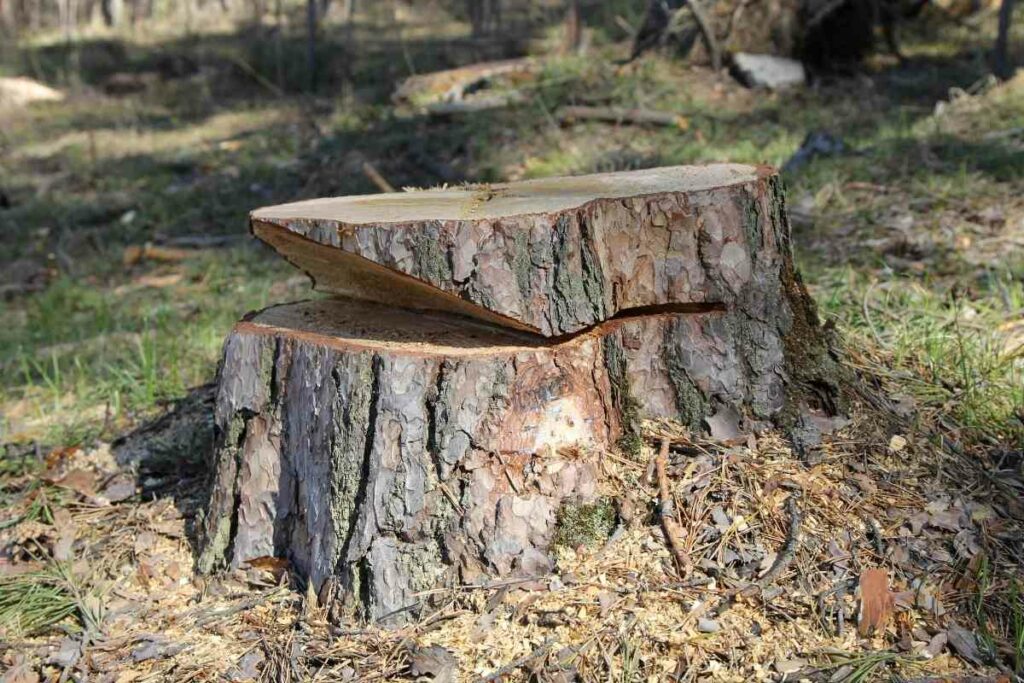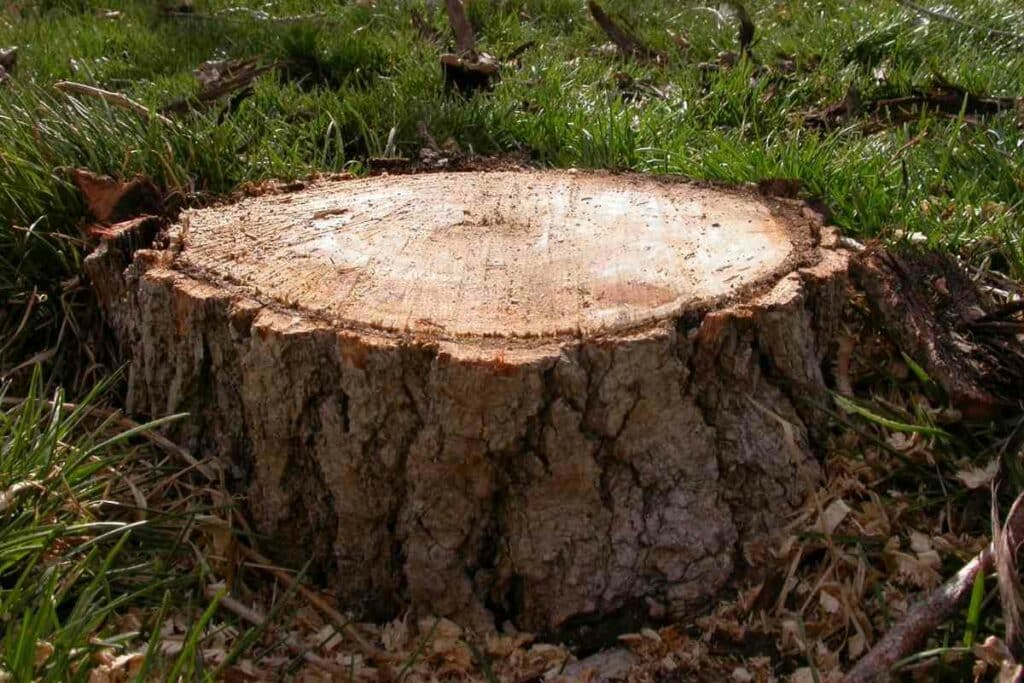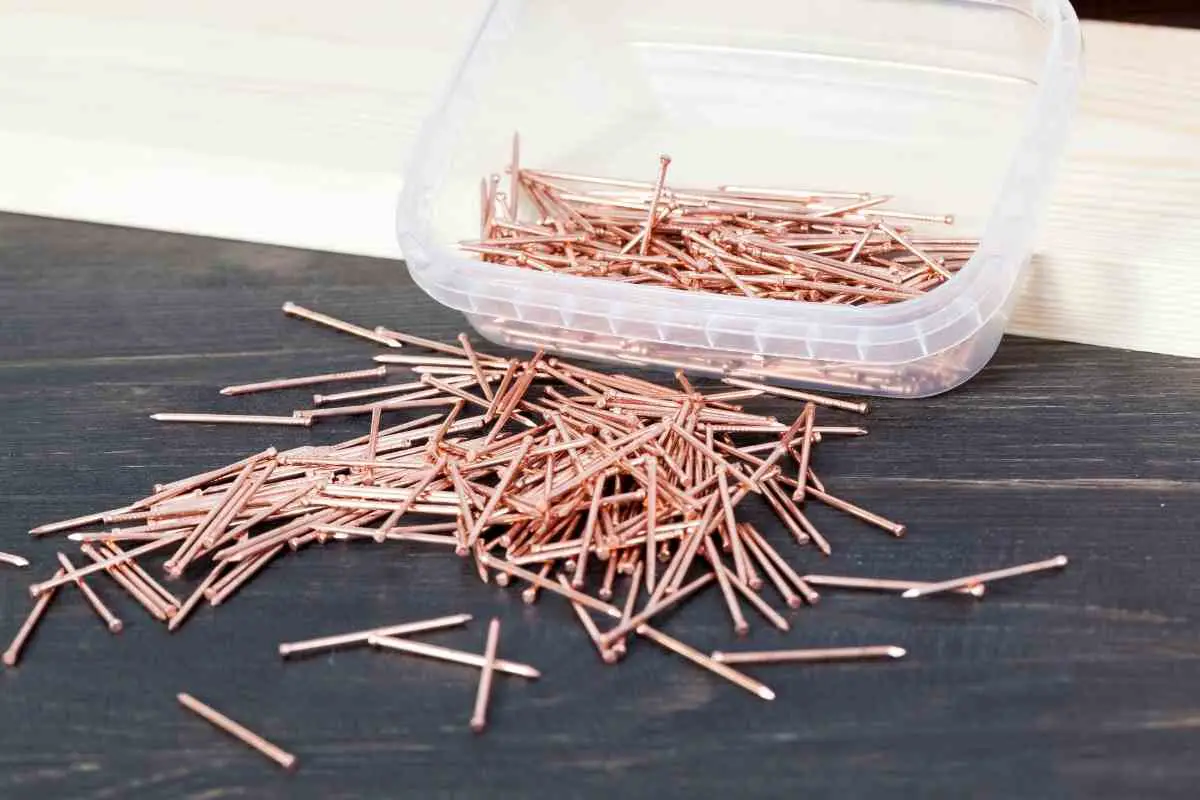There have been interesting debates on social media platforms about the effectiveness of using copper to correct deficiencies in plants and, sometimes, for killing tree stumps.
Unfortunately, there is not enough research on the effects of nails on tree stumps, but if you understand plant requirements and what copper introduces into the plant, you can draw a proper conclusion.
So, the short answer is yes. When used in large numbers, copper nails can kill tree stumps. Allow us to explain.
Basics Of Copper For Plant Health
Copper is an essential element required by plants for proper growth and development.
It helps plants metabolize carbohydrates and proteins.
More importantly, copper intensifies the color of flowers and enhances the taste and color of vegetables.

You can also easily notice the signs of copper deficiency in plants, usually indicated by the yellowing of leaves. However, plants need copper in small doses.
That is why the copper naturally found in soil is mostly enough for plants. Excess copper causes poisoning to plants.
How Do Copper Nails Compromise A Plant?
The idea that copper nails can slowly kill tree stumps is an existing theory.
The idea behind the belief is that copper nails will damage the plant’s nutrient transportation network, thus causing stunted growth and, eventually, death.
Copper nails have a detrimental effect on trees.

If the nails are long enough to reach the xylem and phloem of the plant, then it is possible to harm the plant.
The xylem contains the transport tissues in plants. It transfers water from the roots to the leaves and shoots.
On the other hand, the phloem transports nutrients from the plant’s leaves and shoots to the roots.
When the nails pierce the xylem, they can block the path used by the tree to transport water and nutrients.
This means that the top part of the tree will not have any nutrients to sustain any growth, thus resulting in death.
Remember – The transport tissues will move water to the shoots and nutrients from the leaves to the roots. Therefore, when the nail seals the path, the shoot and leaves do not get water, and the roots do not get any nutrients. This damage could extend up to 5 meters in either direction.
However, the copper nail will only cause such detrimental effects on your tree if you use a long nail on a young plant.
Old trees can easily maneuver around a copper nail, thus continuing to grow naturally.
Copper Poisoning
Copper poisoning is a condition where plants have excess copper in their systems.
Common symptoms include severe wilting, stunted growth, pale leaves, and stunted roots, resulting in plant death.
The most common cause of copper poisoning in plants is the continued use of copper-based fungicides. Industrial activities like mining can also cause copper toxicity.
Copper affects the plant by causing oxidation damage to the plant cells. In addition, excess copper in plants reacts antagonistically with other nutrients.
Therefore, if your trees have copper toxicity, the plant will have trouble absorbing nutrients such as:
- iron
- zinc
- magnesium
- molybdenum
When there is excess copper, it could also replace magnesium.
Magnesium is a crucial nutrient in the photosynthesis process.
It is a vital component of chlorophyll, which means there will be less green matter to make food for the plant.
The introduction of nails introduces copper, which undergoes oxidation, releasing harmful toxins in the tree’s body.
However, copper poisoning will only happen when you drill many nails into the tree stump.
Otherwise, the tree can easily grow with one or two nails on its back.
Copper Nails On Plant Roots
The plant roots keep the plant anchored to the ground.
However, these roots also have protective membranes that keep pathogens and pests from the tree.

If you drill a nail into the plant root, you pierce this membrane, exposing the plant to countless harmful factors.
The pathogens and pests could stunt the plant’s growth or even kill cells in the plant.
Moreover – The copper burns off the tips of the roots. This results in excess lateral growth of the root system.
The roots become short, thick, and appear as barbed wire.
So, if your trees need nutrients located deep inside the ground, they will not reach them, resulting in stunted growth.
So, Do Copper Nails Kill Tree Stumps?
From what you can see above, one nail will not affect the growth of your tree.
Most trees might even use the copper introduced to enhance the color of their leaves and flowers.
Therefore, the claim that a single copper nail can kill tree stumps is far-fetched.
To make a significant dent in your tree’s growth with copper nails, you will have to use many long nails.
You may need as many as 20-30 nails in some cases.
However, the effect of copper nails on your plant also depends on the size of the plant.
A 50-year-old tree will need more than a single copper nail to kill it.
However, if you use the same nail on a small, young plant, you may induce significant damage that could stunt the plant’s growth.
Keep In Mind – If you want to poison your tree with copper nails, you must drive all the nails simultaneously. This is the only way to ensure that the copper levels in the tree increase rapidly, causing copper poisoning, which translates to stunted growth and, eventually, death of the plant.
Bottom line
Copper is an essential micronutrient for the plant.
Copper nails hammered into trees will release their copper into the plant. Therefore, these nails might even benefit the plant’s growth in small numbers.
However, when you use many nails, you can cause copper poisoning, pierce growth and transportation cells in the plant, and even stunt the growth of roots.
The nails will block the transportation paths, while oxidation of the copper nails will release harmful toxins into the plant.
With all these effects combined, it is possible to say that many copper nails may kill your tree stump.
The nails may not be as rapid compared to using poisons on your tree. However, with time, you start to notice the leaves turning color.
Suppose you block the xylem and phloem; you cut out water and nutrients to some parts of the plants, resulting in a slow death.
